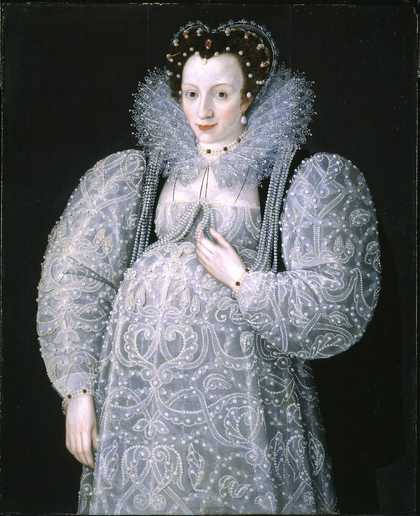
Fig.1
Attributed to Marcus Gheeraerts II 1561 or 2‒1636
Portrait of an Unknown Lady
c.1595
Oil paint on panel
927 x 760 mm
T07699
The painting is in oil paint on an oak panel measuring 967 x 760 mm (fig.1). The panel is made from three vertical boards butt joined with glue (fig.2). Dendrochronological examination identified the wood as Baltic oak, with a felling date from 1578 to about 1590.1 The earliest possible creation date would be 1580 but would be more likely from 1586 onwards.
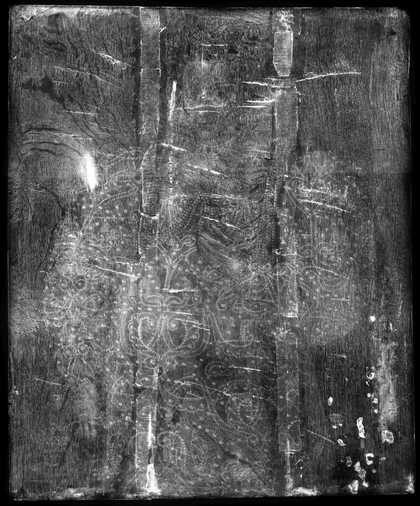
Fig.2
X-radiograph of Portrait of an Unknown Lady c.1595
Vertical marks of an adze are visible on the reverse of all three boards (fig.3). There are also marks left by the saw used to cut the planks from the felled tree; these run horizontally at a slight angle across each plank. All these marks would indicate that the thickness of the panel (10 mm) is original. The joins are now reinforced at the back with modern strips of canvas, and the reverse of the panel is now covered with buff coloured paint. Each back edge has a bevel, which is perhaps not original, since the work of the plane exposed existing damage by woodworm.
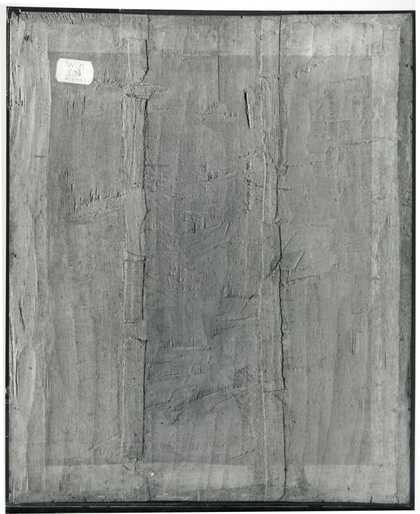
Fig.3
The back of Portrait of an Unknown Lady c.1595, photographed in black and white with raking light from the left
At some point in the panel’s history the right join broke and was trimmed back before being rejoined, causing slight mismatching of the image down the line of the join (fig.4). The panel has developed an overall convex warp.
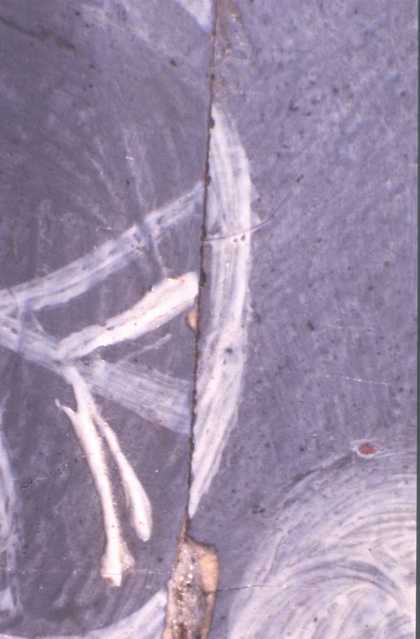
Fig.4
Detail of paint at the join, showing mismatching of the design after trimming of the panel
The off-white ground consists of a mixture of marine chalk and lead white bound together in animal glue (fig.5). The thin grey priming consists of lead white, black and opaque red mixed in oil and applied in a streaky manner.
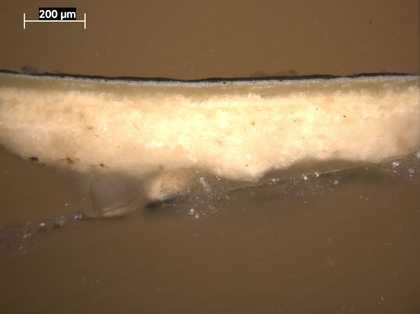
Fig.5
Cross-section through the black cloak, photographed at x100 magnification. From the bottom: white ground; opaque pale grey priming; black paint of cloak
No underdrawing is apparent in the face with any method of examination, although various sketchy lines are visible at close magnification in the costume (figs.6–7).
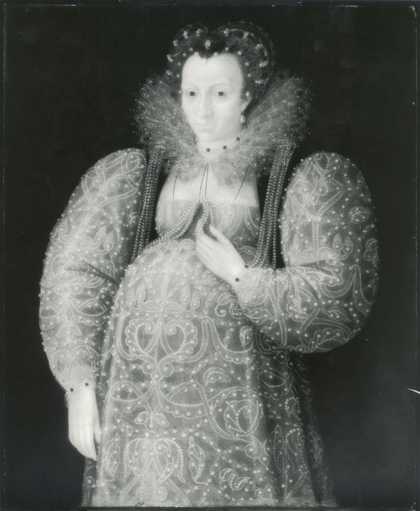
Fig.6
Infrared reflectogram of Portrait of an Unknown Lady c.1595
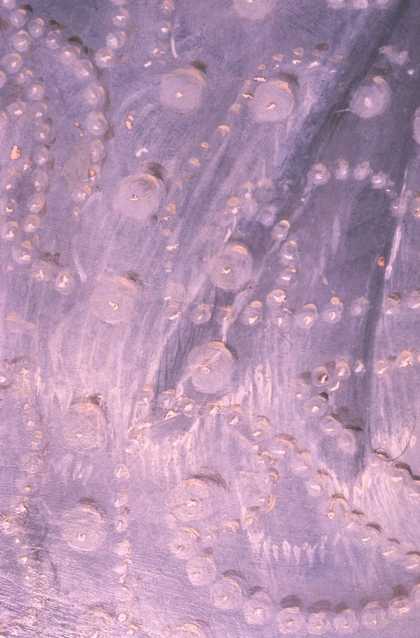
Fig.7
Detail of the sleeve, showing sketchy lines of underdrawing
The artist’s palette for this painting contained lead white, lamp black, charcoal black, red lead, vermilion, red lake, raw umber, yellow ochre and smalt. Many of the paint samples contained very pale smalt or colourless ground glass, suggesting that it was added as a drier for the oil.2
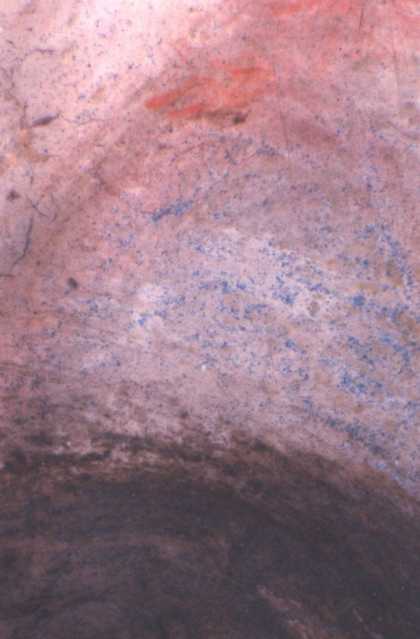
Fig.8
Detail of the eye, with blue pigment mixed with lead white for the receding part of the eyeball

Fig.9
Detail of blue pigment mixed wet-in-wet with flesh tones for the veins in the hand
Some areas of the painting were done wet-in-wet directly onto the priming; others display a sequential or layered technique. The greyish brown tones for the background were mixed from charcoal black, raw umber, red lake, vermilion, red lead and very pale smalt (or plain ground glass) in oil, then applied wet-in-wet to the priming. The cloak was done similarly, using mixtures of lamp black, lead white and raw umber. The flesh tones were mixed from lead white with vermilion, raw umber, lamp black and pale smalt or ground glass, with darker blue smalt mixed in for the veins and the cool shadows around the eyes. A blue pigment that looks like azurite was used for the whites of the eyes and the veins in the hands (figs.8–9). The underlying grey priming lends the cool pearly tone to the face. The artist then reinforced the outline of the sitter’s hands and face with a thin brown paint. The grey tones of the dress were mixed from lead white, lamp black, raw umber and red lead and applied wet-in-wet to give a modelled base for the subsequent application of pattern detail and decoration, which were applied after the lower layer was touch dry. Transparent glazes were used to depict the gauzy material of the sitter’s cuffs and collar. A sample of yellow paint from the highlight of a pearl contained yellow ochre, marine chalk, vermilion and pale smalt or ground glass. Smalt was used with black and lead white for the body of the pearls, with a blue that looks like azurite with lead white for the highlights (fig.10).3 Close examination reveals details such as sgraffito work in wet paint to give texture (fig.11).
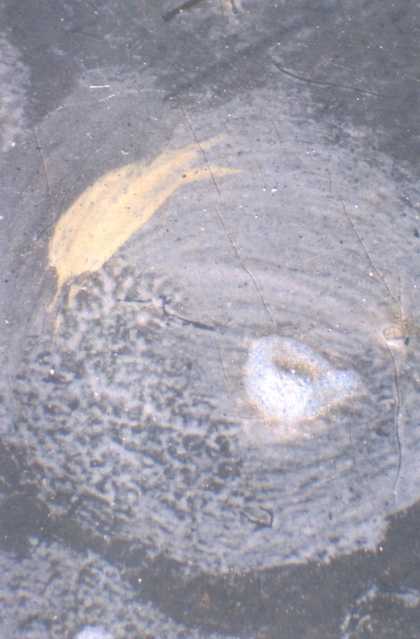
Fig.10
Detail of a pearl on the dress
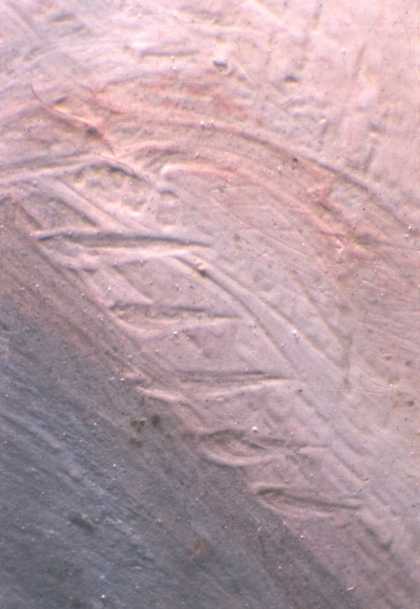
Fig.11
Detail of sgraffito work in paint depicting a finger nail
The painting was cleaned in 2001 shortly after acquisition at Tate. During this process much overpaint was removed from the cloak, which has suffered many losses of paint and ground in the past (fig.12). The losses were filled with chalk putty and retouched with modern synthetic materials. The varnish is a modern synthetic resin.
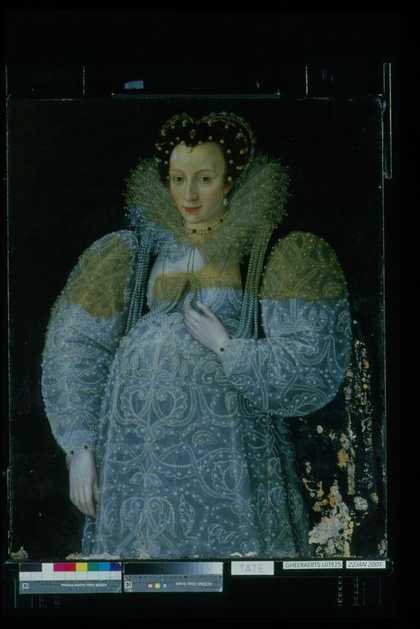
Fig.12
Portrait of an Unknown Lady c.1595 during the removal of old varnish and overpaint
May 2004
